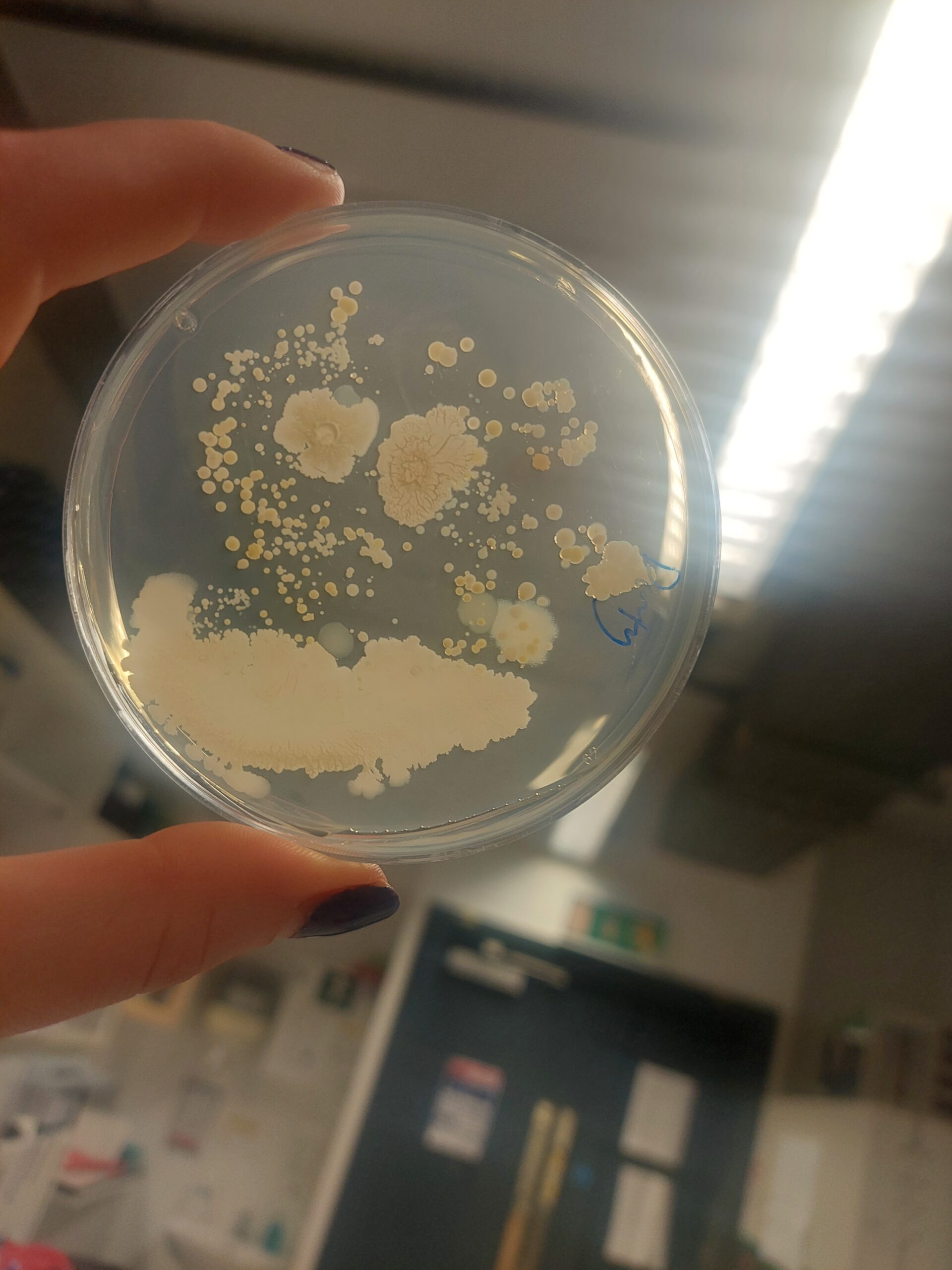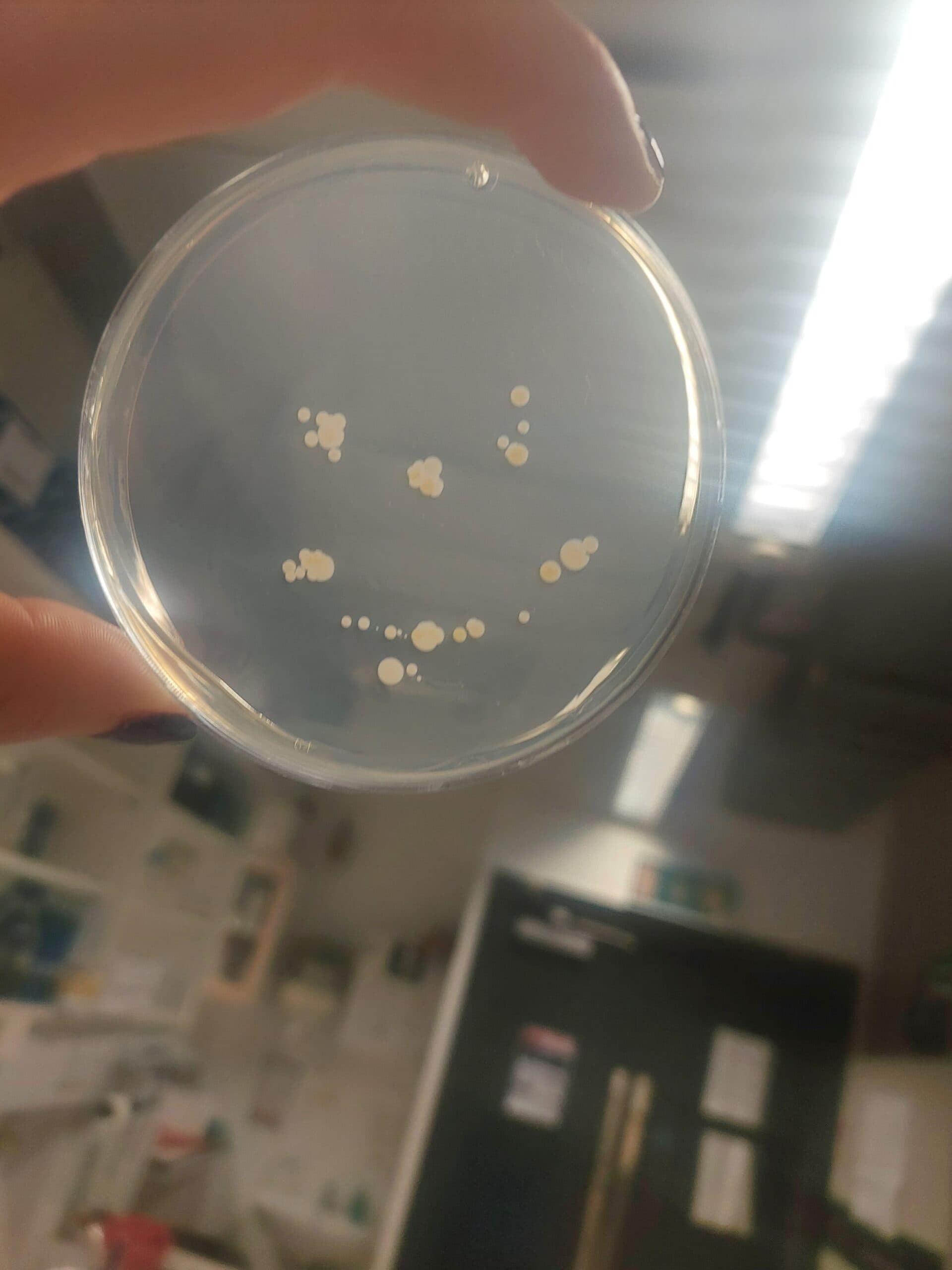A vast number of microbes live on our skin, in our gut, and almost everywhere else you can imagine on and in our bodies. Collectively, these microbes are called the human microbiome and play a crucial role in our health and well-being. Different locations on our bodies contain a specific set of microbes, which are individual microbiomes, i.e., the gut microbiome, skin microbiome, and oral microbiome. The skin microbiome is a relatively less researched microbiome on our bodies but is incredibly important for the health of this protective outer barrier.
What is the skin microbiome?
The skin microbiome is a collection of microorganisms, like bacteria, viruses, and fungi, that live in and on our skin. But the skin encompasses varying sites for microbes to live. Just like the skin on the palm of your hand and your face differ in structure and texture, the microbes in those areas also differ. Some areas are drier, and others are oily and sebaceous. So different microbes thrive in those different environments.
Additionally, the microbes in these different sites will be more similar between individuals than between those sites on your skin. For example, the bacteria on your elbow will be more similar to the bacteria on my elbow than the bacteria between your toes.
How does the skin microbiome keep us healthy?
Our skin is our first line of defense against the outside world. It’s not just a physical barrier. It’s home to millions of bacteria, some of which naturally produce antimicrobial peptides, which are also called bacteriocins. These act like protein missiles, killing off harmful bacteria. So, Julie says, these peptides or bacteriocins are a viable alternative to antibiotics. We need these alternative antibiotics because there’s a global pandemic of antibiotic resistance. And it’s due to a variety of reasons, including overuse of antibiotics in the food chain and over-prescription. Eventually, antibiotics, as we know them, will not work as well or at all in the foreseeable future, leading to unnecessary deaths from currently treatable infections. So we need alternatives.
The microbes on our skin also have probiotic potential in that they fight off microbial competitors that might otherwise harm us and interact with our immune system to train it to respond appropriately to invaders and our resident microbes.
How are microbes involved in eczema and acne?
The diversity and balance of our bacterial communities are vital for our skin health. Many of our skin conditions, such as eczema (also called atopic dermatitis) and acne, are due to imbalances in the native or indigenous microbiota. Eczema is characterized by dry skin, whereas acne is characterized by spots or blemishes. Eczema is the most common chronic inflammatory skin disease and is caused by an overabundance of Staphylococcus aureus. Acne, on the other hand, is caused by an overabundance of Cutibacterium acne.
These microbes involved in the skin conditions like eczema and acne are already present in our microbiota, but under certain conditions, they can “flip and turn bad,” says Julie. These organisms are called opportunistic pathogens. They are friendly or unharmful until the opportunity to be nasty arises, like in the case of a wound. You can think of it like a seesaw, Julie says. If the seesaw is balanced, you probably have a serious skin condition. But if the seesaw tilts in one direction with a surge of Staphylococcus aureus, it indicates eczema.
Current therapies for these skin conditions center around antibiotics, retinoids, and steroids. So, treating these conditions can contribute to antimicrobial resistance. Therefore, Julie and other researchers in this field are strongly motivated to work toward employing antimicrobial peptides in products as alternative or adjunctive therapies.
Gut-skin axis
Our skin microbiota begin to develop the moment we are born when we are cultured by our mother’s microbes. The microbes we are cultured with depends on whether we’re born via birth canal or C-section, says Julie. So the microbes that initially colonize the baby’s skin are profoundly involved in the makeup of the GI tract. Natural birth is ideal because the mother’s Lactobacilli predominantly culture the baby, says Julie, whereas Staphylococci initially colonize children born by C-section. However, when mothers breastfeed C-section babies, these babies can catch up with birth canal-born babies.
Some of us seem to be more affected by acne than others, and scientists are now thinking it’s a result of inflammation or imbalance in our gut’s bacteria. Certain probiotics on the market contain specific strains that can even alleviate acne — not cure it — but they reduce the symptoms. So, researchers are looking into the role of diet in the health of your skin. “I’m seeing for people who eat too much sugary or fatty foods, what basically happens is our intestines become overloaded, and they can’t cope,” says Julie. “So we get this thing called a leaky gut, whereby food metabolites leak out into our bloodstream. And it can cause inflammation of our skin.” Therefore the health of our skin seems to be integrally linked to the health of our gut.
Microbiome-friendly skincare
Some skincare products claim to be “microbiome-friendly.” Microbiome-friendly means a product will not be harsh on and distort our commensal microbes. Companies selling these types of products can gain “microbiome-friendly” certification. One way to obtain this status is through the company MyMicrobiome. They thoroughly test products and provide microbiome-friendly certification.
But there is a bit of a problem in the cosmetics field concerning regulation on product claims. According to the website The Secret Life of Skin, in their interview with MyMicrobiome’s founder Dr. Kristin Newmann, “the number of microbial-related products on the shelves is increasing exponentially and, while products must be compliant with overall cosmetic regulation, there is no precise regulation to validate the product claims for consumers.”
“So when you’re buying skin products,” says Julie, “I would encourage you to read the box and research the brands. Is there science? Is it backed by research?”
Practical tips for maintaining a healthy skin microbiome
Since our skin is our largest organ, we need to invest in it. So, here are some useful tips Julie shared to help us maintain the health of our skin microbiome.
Include enough fiber in your diet
Fiber is extremely important to maintain a healthy gut microbiome. Although it is a type of carbohydrate that our bodies cannot digest, we need it because our gut microbes love fiber and need it to survive and thrive. They digest it for us, which feeds them. All the while, they make vitamins, such as B vitamins, for us.
Women are recommended to consume between 21 and 25 grams, and men consume 30 to 38 grams of fiber daily. But many of us are not meeting that target. We can increase our fiber intake by opting for whole wheat bread and pasta and eating fiber-rich fruits, vegetables, and seeds.
Include fish oils in your diet
Making sure you have fish oils in your diet, Omega 3s, whether through your food or supplements, is vital for hydrating your skin.
Make sure you drink enough water
Hydration is essential for your gut and, therefore, your skin microbes. We should be drinking around 0.5 ounces of water per pound of body weight or 30 mL of water per kg of body weight.
Get enough vitamin C daily
According to Julie, Vitamin C is an unsung hero, helping with skin brightening. While getting it in your diet, she also recommends taking it as a supplement.
Cleanse your skin
The top priority for taking care of your skin is to cleanse. Just because you don’t wear makeup doesn’t mean your skin isn’t dirty, says Julie. When you’re outside walking down the street, your skin picks up dirt and pollutants. So cleanse in the morning and evening using a gentle cleanser that works for your skin type, and avoid harsh physical exfoliants. Chemical exfoliants containing lactic acid bacteria or salicylic acid are much more gentle.
Wear Sunscreen
Wear SPF every day, so your microbes don’t sizzle in the sun, says Julie, even when it’s not sunny.
Buy skin care products that contain vitamins
Select skincare products with active ingredients like vitamin E and vitamin C. Vitamin C helps with skin brightening and texture, and Vitamin E with anti-aging. So, Julie recommends everyone from their mid-20s and up to incorporate it into their skincare routine. It is also an antioxidant.
Skin microbiome tests
Skin microbiome tests can tell us what microbes we have living on our skin. Julie suggests they are helpful for skincare professionals in deciphering the best skin regime or guiding you in selecting probiotics. It might tell you if you’ve got higher levels of one bacteria in comparison to another. Ultimately, it might help you figure out if you’re dealing with an imbalance of some sort in your microbiome that you could treat in a specific way based on that particular imbalance.
A company called Labskin has set up a health tracking app called Skin Trust Club that provides personalized skincare suggestions based on the consumer’s unique skin microbiome and skin type. Another skin microbiome test comes from a company founded by Dr. Elsa Jungman. This company tests your skin microbiome, gives you your microbiome profile, and suggests the best ingredients for it. They also sell microbiome-friendly skincare products.
When it comes to these tests, “it is still hard to understand the results,” says Julie. “But it is clear that there is a link between our microbiome and different skin diseases like eczema, or atopic dermatitis, and acne, dry skin or oily skin, etc. So the data could help consumers find correct products, and importantly, learn about their skin in the process.”
At-home microbiology activity: Hand washing and skin microbes
In this activity, you’ll have the chance to see how hand washing affects the microbes on your skin by comparing microbes from your hand before and after hand washing.
- Purchase or make agar plates, aka Petri dishes. Find out where to buy or how to make agar plates here.
- Before you wash your hands, press your hand or two or three fingers onto the plate, and then put the lid back on the plate.
- Wash your hands with hand soap and dry them properly. And then press your hand or two or three fingers onto a fresh plate, and then put the cover back on.
- For safety, seal the plates with either parafilm or cling film (plastic wrap), and tape up the plates so they won’t open.
- Turn the plates upside down (agar side up) because the microbes will create water vapor as they grow. If you leave your plates upwards (agar side down), the water droplets that form on the lid might fall on the agar and cause the individual bacterial colonies to run together.
- If you have a way to incubate them at 37 degrees Celsius, you can grow them overnight. Otherwise, leave them at room temperature for several days and monitor them each day.
- When you go back and look at them, you can see how well you’ve washed your hands.

Before hand washing

After hand washing
Example plates showing microbes from the hand washing activity. Photos courtesy of Dr. Julie O’Sullivan.